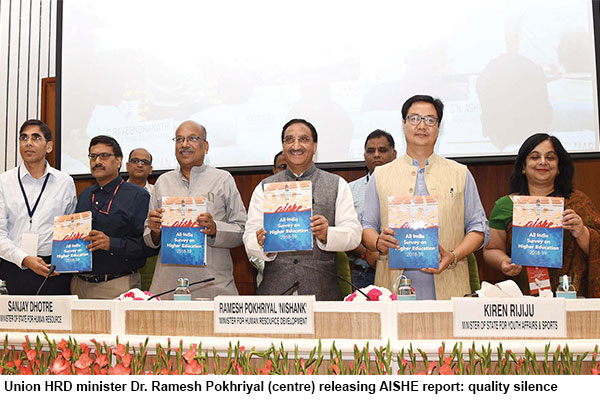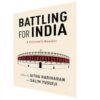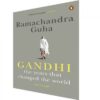Delhi – Empty statistics
 At a central advisory board of Education (CABE) committee meeting convened on September 21 to deliberate the 484-page National Education Policy 2019 (NEP) draft report of the K. Kasturirangan Committee (released for public debate on May 31), the Union HRD ministry took time off to release the All India Survey on Higher Education (AISHE) 2018-19 report titled Higher Education Statistics and Public Information System.
At a central advisory board of Education (CABE) committee meeting convened on September 21 to deliberate the 484-page National Education Policy 2019 (NEP) draft report of the K. Kasturirangan Committee (released for public debate on May 31), the Union HRD ministry took time off to release the All India Survey on Higher Education (AISHE) 2018-19 report titled Higher Education Statistics and Public Information System.
AISHE was initiated in 2011 to provide data for evidence-based policy formulation and effective planning in higher education. With the NEP 2019 in the final phase of preparation, the latest AISHE statistics offer important insights into the feasibility of the far-reaching reforms suggested for higher education in the draft NEP. Among the KR Committee’s proposals is division of higher education institutions into multidisciplinary research universities, traditional teaching universities and colleges, and to raise gross enrolment ratio (GER) in higher education from the current 26.3 to 50 percent.
According to AISHE 2018-19, India has 993 universities of which 385 are privately managed and 16 are exclusively for women. There are 548 general, 142 technical, 63 agriculture & allied, 58 medical, 23 law, 13 Sanskrit and nine language universities with the remaining 106 falling into other categories.
AISHE 2018-19 pegs the number of undergrad colleges in the country at 39,931, with Bangalore urban district hosting 880 followed by Jaipur (566). College density or the number of colleges per lakh eligible population (in age-group 18-23) varies from a mere seven in Bihar to 53 in Karnataka against the national average of 28. Significantly, 78 percent of undergrad colleges are private (aided and unaided) institutions tutoring and mentoring 66.4 percent of all students in higher education.
In terms of numbers, aggregate enrolment in higher education institutions (HEIs) is estimated at 37.4 million with 19.2 million males and 18.2 million females with 80 percent enrolled in undergrad programmes. A mere 0.5 percent (1.69 lakh) of students in higher education are pursuing Ph D programmes – a shocking indictment of the country’s research effort.
Unsurprisingly, arts, commerce and science colleges attract the largest number of students with ten of their 187 programmes drawing 80.3 percent of students enrolled in higher education.
Curiously despite India’s HEIs faring very poorly in global league tables, 47,427 foreign students from 164 countries around the world are enrolled in HEIs, with Nepal (26.8 percent), Afghanistan (9.8), Bangladesh (4.38), Sudan (4.02), Bhutan (3.82) and Nigeria (3.4) being the major countries with faith in India’s HEIs.
Prof. Furqan Qamar, who teaches business at the Centre for Management Studies of Delhi’s Jamia Millia Islamia University, predicts consolidation of higher education institutions, with the country’s 10,725 standalone colleges/universities ripe for takeover and amalgamation into multi-disciplinary universities proposed by the Kasturirangan Committee’s NEP 2019 draft. Standalone institutions will be obliged to merge with larger HEIs in their neighbourhood.
“Business management programmes are neither wholly knowledge nor skill-based. B-school education has its own dynamics of linkages with corporates and the jobs market. Therefore, it would be advisable for them to be exempted from merging with multi-disciplinary universities,” says Dr. Harivansh Chaturvedi, director of the Birla Institute of Management & Technology (BIMTECH), Noida (estb.1988).
Curiously while the AISHE report is replete with hard data related to number of HEIs and their constituent colleges, institutes and study programmes, it is silent about the quality of education they dispense. It doesn’t mention that not even one of India’s 993 universities is ranked among the Top 200 universities ranked by QS and Times Higher Education which publish detailed league tables rating and ranking the world’s Top 1,000 universities. Against this seven Chinese universities are ranked in the latest THE global Top 200 league tables.
Quite clearly, the AISHE report is published and trumpeted to highlight government achievements in higher education, and the numbers are impressive. But the plain truth is that the quality of education dispensed by HEIs, which are strictly controlled and guided by Central government agencies such as UGC, AICTE which in turn are strictly monitored by the Union HRD ministry, is pathetic. According to Aspiring Minds, a Delhi-based employees assessment and recruiting firm, 75 percent of the country’s engineering graduates and 85 percent of arts, science and commerce graduates are unemployable in Indian and foreign multinationals. This alarming data which explains contemporary India’s ballooning unemployment crisis – and perhaps also rock-bottom agriculture, industrial and services sector productivity – should also be addressed by the annual AISHE report. Publication of mere numbers without interpretation is a meaningless exercise.
Autar Nehru (Delhi)
















Add comment